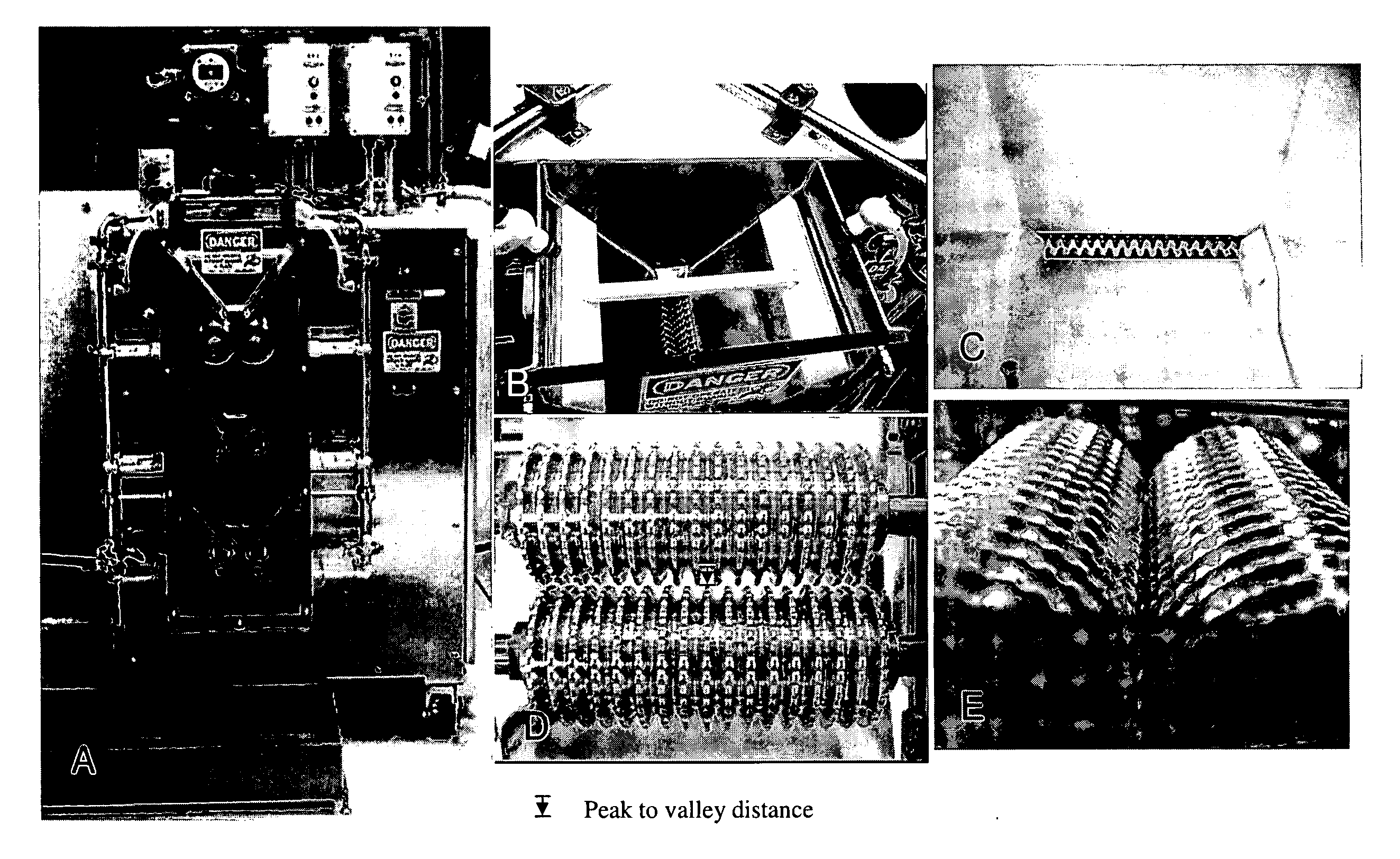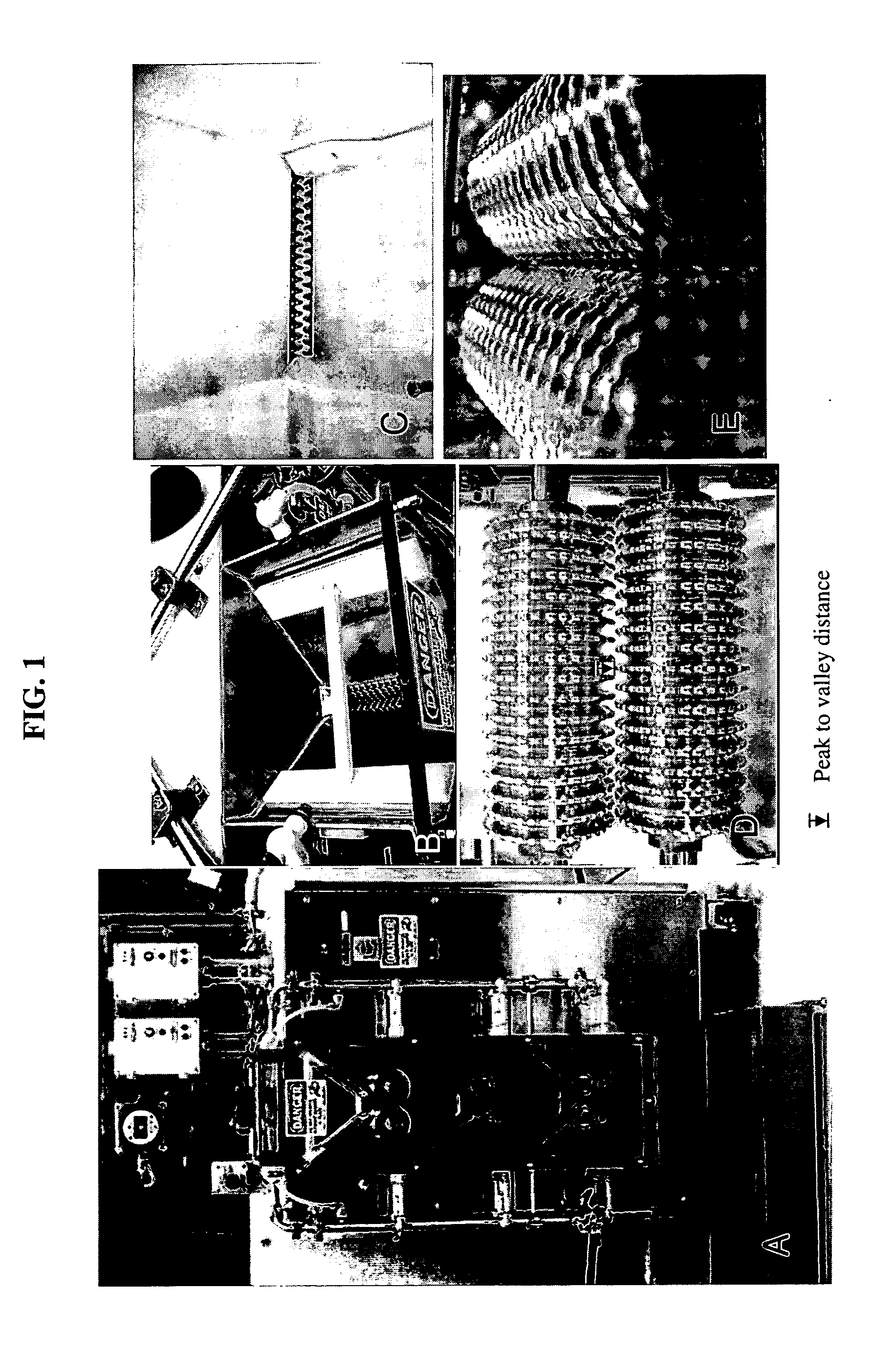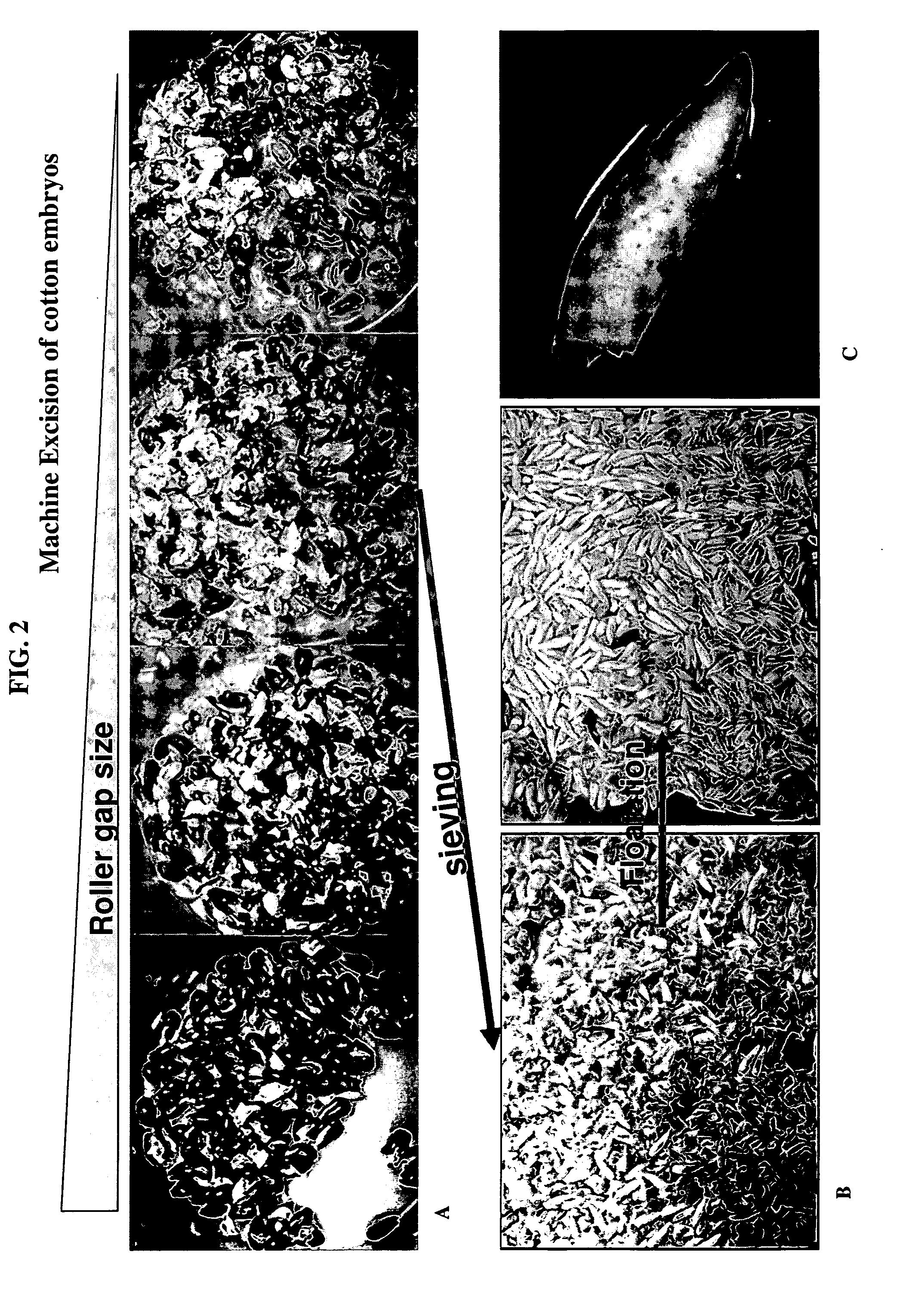Method of meristem excision and transformation
a technology of meristems and excisions, applied in the field of meristem excision and transformation, can solve the problems of low recovery rate of usable embryos, low efficiency of excision, and high labor intensity, and achieve the effect of enriching the fraction of explants amenable to transformation
- Summary
- Abstract
- Description
- Claims
- Application Information
AI Technical Summary
Benefits of technology
Problems solved by technology
Method used
Image
Examples
example 1
Cotton Seed Sterilization, Hydration, and Excision and Recovery of Meristem Explants
[0070]A. Cottonseed Sterilization and Hydration
[0071]Cotton seeds were mechanically processed to excise and isolate their meristematic tissues. In order to obtain transformable meristematic explant material, cotton seeds (e.g. from genotypes STN474 (Stoneville Pedigreed Seed Co., Stoneville, Miss.), Delta Pearl (Delta and Pine Land Co., Scott, Miss.), DP5415, DP393, 00S04 (Delta and Pine Land Co.), SureGrow501 or SureGrow747 (Sure Grow Cotton Seed Company, Maricopa, Ariz.) were processed as follows to separate the embryo, comprising meristematic tissues, from the seed coat and cotyledon(s). Cotton seeds were removed from storage at 4° C. or −20° C. and brought to room temperature. Seeds were weighed out, placed into a sterile imbibition unit, and surface-sterilized in 50% Clorox (sodium hypochlorite) for 5 min. Seeds are then rinsed 3 times with sterile distilled water and were hydrated in a liquid h...
example 2
Meristematic Explant Separation by Sieving
[0075]After seed material passed through the roller mechanism), the crushed seed mixture (FIG. 2) was collected by a sieve that allows water to escape but retains crushed seed. The effect of roller spacing on the condition of meristematic tissues from crushed seeds is also shown in FIG. 2. Retained material was then screened to remove debris and enrich for potentially regenerable and transformable explants, comprising meristematic tissues. One method to separate meristematic explants from seed coat and cotyledonary material of the bulk crushed seed was by mechanized or manual sieving, shown in FIG. 2. Various materials were tested in constructing the sieves, including carbon steel screens and stainless steel screens with aluminum, wood, or steel sides. A “V” shaped sieve cross section was found to be easy to manufacture and effective in retaining explants while allowing smaller debris to pass through (FIG. 3). Meristematic explants from crus...
example 3
Further Enrichment of Recovered Embryonic Explants
[0078]The recovered explants from the above example still contained some debris. Explants were further purified by a floatation method. The method was based on the observation that most freshly sieved explants, but not most of the debris, are able to float to the surface of fresh sterile deionized water. This step removed additional debris improving the explant purity (e.g. FIG. 2) and as shown in Tables 6-7. Floatation separation (i.e. with discarding of the sinking fraction) can result in some loss of transformable explants, since both floating and sinking fractions contained transformable explants as judged by subsequent Agrobacterium-mediated transient transformation and GUS staining of explant material from each fraction of explants. However, the explant purity of the floating fraction is considerably improved as compared to the material without the floatation step.
TABLE 6Enrichment of explants by floatation.2 step sieving +Yiel...
PUM
| Property | Measurement | Unit |
|---|---|---|
| Temperature | aaaaa | aaaaa |
| Temperature | aaaaa | aaaaa |
| Length | aaaaa | aaaaa |
Abstract
Description
Claims
Application Information
 Login to View More
Login to View More - R&D
- Intellectual Property
- Life Sciences
- Materials
- Tech Scout
- Unparalleled Data Quality
- Higher Quality Content
- 60% Fewer Hallucinations
Browse by: Latest US Patents, China's latest patents, Technical Efficacy Thesaurus, Application Domain, Technology Topic, Popular Technical Reports.
© 2025 PatSnap. All rights reserved.Legal|Privacy policy|Modern Slavery Act Transparency Statement|Sitemap|About US| Contact US: help@patsnap.com



